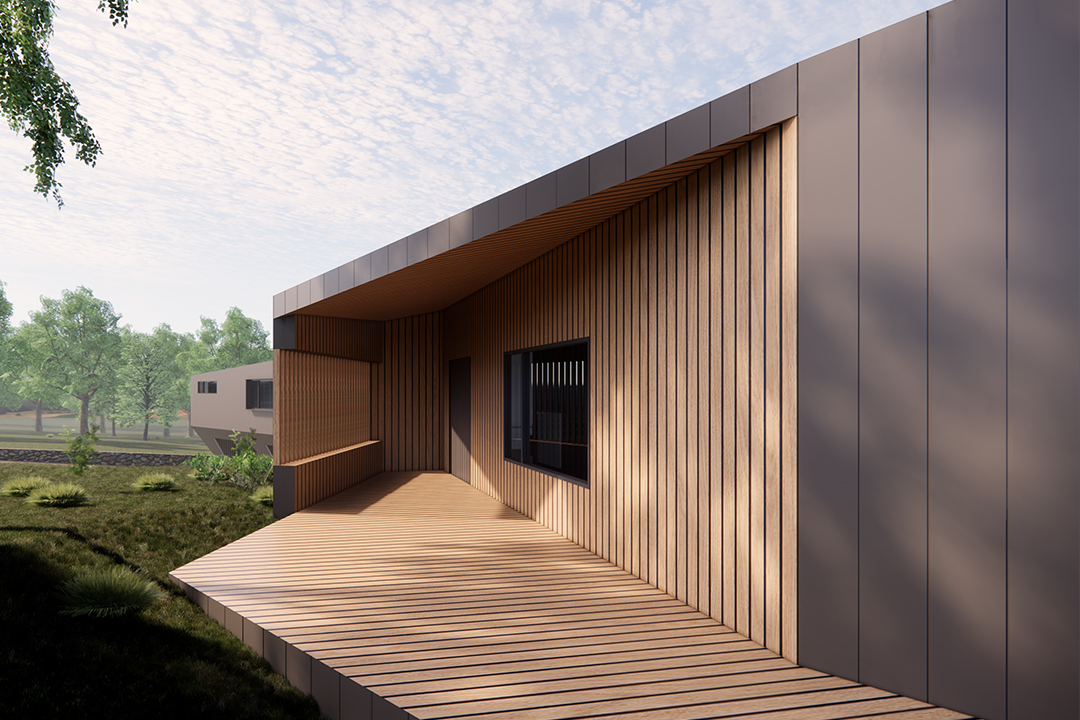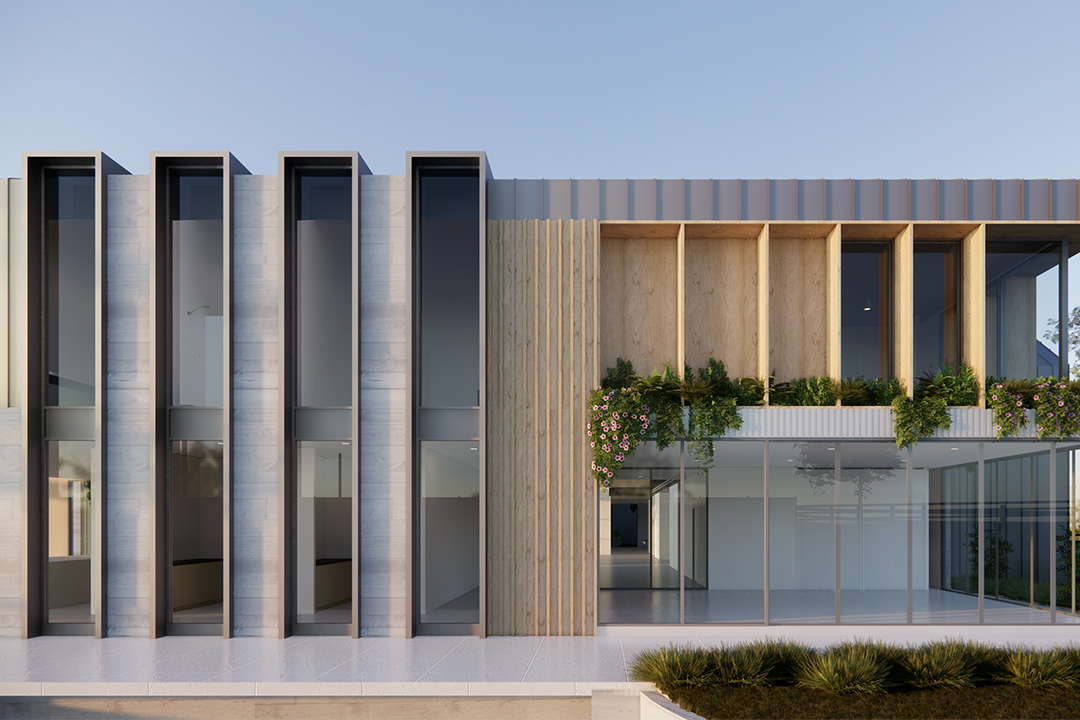WHAT’S YOUR ANGLE?
Designs that embrace geometric lines have paved a well-established path in modern architecture. While on the surface they appear subtle and simple, the effect they have on drawing the eye and accentuating special features is unparalleled. Kirrily Ireland speaks with Jake Wilson, architect and design manager of graham jones design, to explore the benefits of using straight and angled lines in building design.
Written by Kirrily Ireland.

Versatile and timeless, straight and angled lines are fantastic tools for designers “to create something new and exciting or to play upon traditional forms”, whether that’s in an urban, suburban, rural or coastal context. Both the external and internal parts of the home can profit from the whims of lineation, be it through the use of clean edges, intentional intersections or strong profiles.
STRAIGHT TO THE POINT
There’s no one better than the lead designer of a company that “designs for life” – “that is, designs for a lifestyle that will last a lifetime” – to convince you of this contemporary trend. “Straight and angled lines
allow for simple design without being simplistic – carefully considered and highly detailed without over or underwhelming you,” Wilson says. “Aesthetically, you can create a bold, strong statement with a sharp piercing linear element, or your lines can be soft and subtle, allowing other architectural ingredients to be the hero.”
Although seemingly rigid, straight lines come with a wealth of flexible uses, creating different effects depending on what you’re going for. “Lines can be used to lead your eye across the building and beyond, to frame a particular aspect, or to be an awe-inspiring exclamation point,” Wilson explains. “Special architectural outcomes are born from exploring how linear elements intersect and collide to generate new points of interest in a building and create unique visual and spatial conditions. These can be sleek and cool, dynamic and brave, or a marriage between [the two]. The beauty is that linear elements leave so much room to play with other ideas like scale and materiality – they can be such a versatile architectural tool.”

Not only do straight and angled lines look great, they’re also a highly functional design choice, making the construction process more straightforward compared to complex shaped buildings, as they efficiently utilise the allocated space. When it comes to this construction process, the flexibility of straight-line designs proves itself again, since the expert declares that “there’s no limit to how
creative and inventive you can get with the materials you use depending on the aesthetic you’re after”. This could include anything from bricks to blockwork, strong metal claddings and timber, or rammed earth and off-form concrete. Each material will bring about a varying effect, but when done well, will look fantastic either way.

DRAW THE LINE
As the streets are gradually filled with modern homes showcasing defined angles and sharp edges, updating your own façade with these cool compositions may be tempting. Wilson explains that with the external of the home, you can go both big and small. “External design allows for linear elements across a macro scale – with larger formal gestures – to a micro scale – with nuanced patterns and materials.”
He stresses that the sky is really the limit when it comes to incorporating these elements into your façade, and incorporating elements like a blade wall or box-like structure into your home’s entrance can make an elegant and opulent statement.
Beyond the more intentional uses of straight and angled lines, these also tend to appear naturally in the materials and common construction methods often employed by designers and builders – combined with the planned angles and lineation, the result can be truly spectacular. This could be anything from the V-grooves in cladding or window mullions. Speaking of windows, these can “complement the linear elements of the façade to accentuate [their] effect or generate cohesion, they can be a point of relief in a complex design, or they may draw your attention to a stunning glazed element or entry door”.
Straight and angled lines can serve a home’s interior just as well, even if it’s in a less obvious way. What many homeowners don’t realise is that architects and building designers quite often have to consider lineation when creating the layout of a house to ensure it is ergonomic. “Lines can be adopted to guide a user through the space or even to a view beyond, whilst layering these lines can really elevate your experience and make it a space worth inhabiting,” Wilson says.
This isn’t to say you can’t adopt this design trend to create a statement, whether that’s in the kitchen with a sleek waterfall edge benchtop, in the living area with a geometric display unit, or in the bedroom with a slatted feature wall. “These are all one-off items that draw your attention and can really stand on their own using clean, crisp edges and lines.”
TAKE THE EDGE OFF
While sharp lines and linear designs are undoubtedly stylish, the intensity they evoke often requires softer, complementary elements to help alleviate their severity. “As alluring as the sharpness of clean lines can be, you never want your home to feel too rigid or sterile,” Wilson agrees. “When taking this approach to design, it’s important to consider and implement a sense of texture, of layering and of scale to relate it back to a human experience and retain a feeling of domesticity or homeliness.” Materials, proportions and cohesion all come into play here.


Introducing curves and circular elements is an effective way to “break up repeating linear elements”. This can be achieved in a number of areas within the design. “In our own designs,” Wilson says, “we find that employing a simple circular cut in a wall or a roof is a great way to bring relief to a large linear form and create a point of focus for the user, whilst a simple but concise curve within a floor plan has the same effect.” The main goal is to reach a certain balance and not overdo it with any single shape.
Cutting-edge home design in its most simple form is about championing sleek edges and angles, and turning the humble line into the hero of a façade while simultaneously using it to mark out functional, flowing spaces inside
